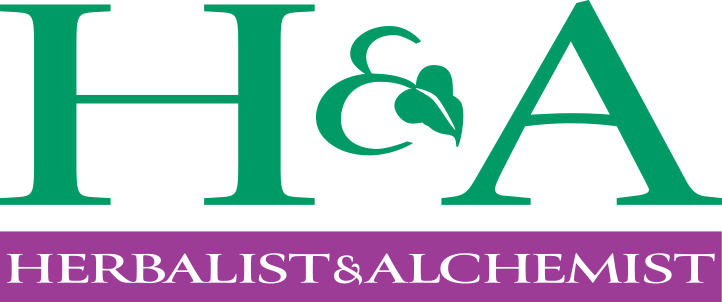Megan Stypulkoski is an herbalist & artist whose company, Sheep Hill Herbals, is in Boonton, NJ. She gives herbal consultations, holds workshops, and sells her artwork, bulk teas, tinctures, and many other herb related items.
Like many of the people we interview, your affinity for plants has been part of who you are your whole life, but you’re the first to extend that to artwork. Tell us about this.
A love for plants is definitely a trait that many people are born with, and I think the same is true for being an artist – it’s just part of who you are. There’s always an innate desire to be creative in some way, even if that creativity ebbs at times. I remember when I got to college, I spent about a year or two trying to decide which I wanted to study – art or biology. I couldn’t choose, so I studied both, and it was interesting to see the two responses I would get from some people. There were those who saw art and science as totally incompatible and opposite, and then there were the ones who would say, “oh, what a great combination.” I think ‘STEM’ was recently changed to ‘STEAM’ to include art, so it’s now “Science, Technology. Engineering, Art, and Math,” which is great. Of course, when I was in college my art was super weird and didn’t have a lot to do with plants, but creativity in some way is important across all disciplines. It’s what makes us human.
After I graduated college, I wanted to do something that could make a difference in biodiversity conservation, but I wasn’t really excited about getting into field research. So I just started illustrating anthropomorphic plants (mostly food crops at the time) to share stories about human-plant relationships. Few people will sit and read a peer reviewed paper in an ecology journal or a biodiversity report on invasive species, but they’ll read little blurbs that are paired with fun and whimsical art. From a botany perspective, art helps us focus on the tiny details of a plant while also being aware of the life of it – how light dapples on it, how it moves in the wind, and so on. But really, when things are just a part of who you are, they’ll naturally enmesh.
It’s clear from your website that environmental and social justice are linked to your commitment to herbalism. Would you elaborate on that for us?
Honestly, I don’t understand how all these things aren’t linked for some people. It doesn’t matter how adept and meticulous someone may be as an herbalist, if the issue at hand is societally systemic, herbs will only ever serve as a buffer. People who juggle two jobs just to keep a roof over their heads will come home too exhausted to cook a nutritious meal, or they’re too burnt out to regulate stress in a healthy way. Factories are built in low-income neighborhoods, and pipelines are built on sacred Indigenous land. So many people don’t have access to basic necessities like fresh food, essential healthcare, or clean water. The solution to these issues has to come from policy.
Environmentalism links to herbalism in really obvious ways, too. If we don’t take care of the land, then we won’t have plants left to rely on. I think this concept is understood in a general way in the herbal community, but many people don’t realize just how vulnerable biodiversity has become, especially in the wake of climate change and the spread of invasive species. Everyone knows about the Monarch-Milkweed relationship, but this type of plant-insect specialization is so common in ecology. There are two native species of True Bugs who specialize on Milkweed, plus three Milkweed beetles native to the Eastern US. I feel like some people think that plants exist only for humans and don’t realize that plants are the backbone to these vibrant micro-communities when they’re grown in their native range. These are the communities that plants have evolved with, and understanding them helps us understand the plants.
Many herbalists say that “to heal ourselves, we must heal the land.” Well, if we want to heal the land, we need to understand just how deeply interconnected social justice, biodiversity conservation, and public health are. These issues all go hand in hand, and they need to be included in our conversations around health and healing.
